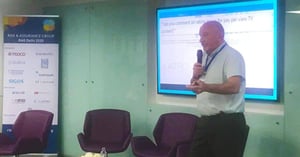Neural Technologies Rating Reconciliation solution helps CSPs prepare for 5G and keep their bottom-line safe. Using Rating, Charging and Machine Learning & Artificial Intelligence, CPS’s can implement Revenue Protection in the 5G era.
SINGAPORE, 5 February 2020 – To manage the growing number of 5G end-user services, Communications Service Providers (CSPs) must consider ‘real-time’ digital rating and charging processes to fully capitalize on new 5G revenue streams and avoid revenue leakages, says Paul Cox, Business Development Manager at Neural Technologies, at RAG Delhi Conference, 5 – 6 February 2020.
With the emergence of 5G, customers are demanding increasing levels of personalized end-user services, reflecting in many new revenue streams for CSPs. Speaking at the RAG Delhi Conference, Cox explains how to manage increasing volumes of complex end-user services for effective management of charging and billing processes.
“To truly capitalize on the many opportunities of 5G use cases, CSPs must adapt with the latest digital transformation technologies to create a ‘real-time’ experience of service delivery and payment to foster long-term customer loyalty,” said Paul Cox at Neural Technologies. “To achieve this, CSPs need to create a near real-time convergent rating and charging strategy which can match service demand using the latest Artificial Intelligence (AI) and Machine Learning (ML) technology.”
Detecting revenue leakages is key to maximize on the potential of new service revenue streams. With volumes of customer transactions, Neural Technologies’ Rating Reconciliation solution supports the management of tens of thousands of data records per second which is critical in order to process and charge customers accurately for the services they opt into.
Neural Technologies’ Rating supports legacy and next-generation environments, any type of device and any type of service and payment method to fully support the management of volumes of data records. The Optimus Charging solution, based on the Optimus Platform, provides a fully configurable solution covering all processes involved with the charging requirements. Including configurable input formats, convergent mediation, complex tariff plans to accurately charge the customers services. This is critical to support growing end-user usage and execute efficient, accurate charges to foster customer loyalty.
Paul Cox at Neural Technologies addressed the challenges of revenue management with Optimus Revenue Assurance Rating Reconciliation during his presentation at RAG Delhi Conference 2020 on the 5th February.
For more information about Neural Technologies and the Optimus portfolio, visit www.neuralt.com or email info@neuralt.com.
